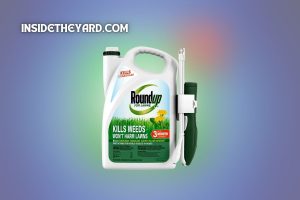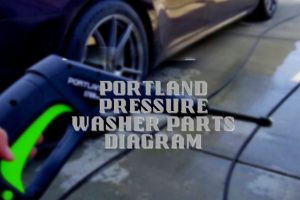John Deere Gator Parts Diagram in Detail for Troubleshooting!
Troubleshooting the john Deere gator can become difficult at some point if you have a limited idea of how the internal parts work.
So having a somewhat clear idea of the whole mechanism will help you to prepare for future repair/replacement needs. Plus, it also makes it easier to detect the problems that the equipment might be going through.
And from that view, we feel a john Deere gator parts diagram will come really handy. Not only this, but we will also try to go through the common issues that the parts face so that it gets even better. So, stay tuned till the very end!
Table of Contents
John Deere Gator Parts Diagram – Lookup the List!
In exterior and interior views, you’ll notice all parts of the Gator utility vehicle, where some might seem familiar in looks while most are anonymous. So, how to identify each component? Here’s the most-asked diagram of John Deere Gator parts.

Gator JD Parts Details:
1. Windshield Frame
It’s a handy part that holds the windshield in place in an upright position. This is also known as A-pliers.
2. Windshield
Among all John Deere parts catalogue, it stands on the front side so that a driver can view the outside environment. This part protects the utility vehicle owner from debris, raindrops, sunlight, or bugs attack.
3. Dash Handle
This is a cool mechanism that looks like an ordinary knob with a slight curve to hold. It gives a good grip on entering the utility truck bed.
4. Steering Wheel
A handy part that a driver holds is to steer and move the vehicle in different directions. It’s also called driving or handwheel.
5. Seats
Most utility vehicles like Gator would come with 2 large yellow seats. These seem pretty cushiony and comfy to sit on.
6. Roll Bar Tube Grilled
Simply, it’s a tiny cage that sits on the roll bar tube to keep it in the right position. This stays on the rear side.
7. Seat Handle
In the John Deere Gator, the front 2 seats contain two-seat handles on each side. It helps a lot to get a good grip when riding in bumpy terrain.
8. Roll Bar Tube
To keep the vehicle in a stable state when making tight turns, this part supports a lot thanks to the solid tubing.
9. Tailgate
This is simply a hinged board or gate that stands on the backside of a utility truck. It can be flipped up and down to carry loads.
10. Dump Bed
It’s a part that carries things by swinging the tailgate downward or upward. This holds huge storage in the Gator utility vehicle.
11. Dump Bed Insert
To hold the big dump bed inside the utility truck, the insert set do a great job. Using a couple of inserts might help carry 6,000 lbs. on average.
12. Gearbox Cover
This is mostly made out of steel or aluminum to secure the gearbox in a neat way. It is mid-size and durable.
13. Rear Wheel Pack
Being a 2-wheel drive, the Gator utility vehicle contains 2 large wheels on the backside that are connected to the drive shaft of the engine.
14. Large Hubcap
It’s quite large in size that sits on the rear wheels which mostly work as a decorative disk. This covers the hub or wheels.
15. Small Hubcap
The part is super tiny and fits well in the hub of the utility vehicle’s wheels. It is detachable and attachable.
16. Front Wheel Pack
This sits on the front side to keep the front area maneuvering and moving smoothly. It tends to be smaller than the rear wheel pack.
17. Battery 12V
Holding the 12 voltages under a specific load, its main job is to supply energy to the working parts to start the vehicle instantly.
18. Cover
Unlike other parts of John Deere Gator diagram, this holds the steering and other components in a good way.
19. Rear Axle
Placed right between the differential, driving wheels, and transmit power, you’ll find this part. It looks like a long rod.
20. Motor Gearbox
This uses a set of gears to either reduce the speed radically or add more torque when driving with the utility vehicle.
21. Front Axle
A useful part that is responsible to steer or move the front side during an unexpected shock or bumps in the road.
22. Harness Gator HLR
It’s a wiring harness that works to signal each component when any action is taken during the ride.
23. Shock Absorber
This works like a dampener using a specific mechanical or hydraulic gear made to absorb the vibrations or jumps.
24. Steering Rod
Looks like the alphabet ‘J’, it’s a tool that connects the steering rack aka pinion and rack to the steering knuckle.
25. Steering Column Cover
It keeps the wirings (which go to the turn signal, headlight, and cruise control switches) inside the steering column and secures using a tight seal.
26. Brush Guard
A tough steel part that protects the front bottom of a utility vehicle so that it can operate even after a crash.
27. Body Frame
The design of this part is pretty familiar which holds the seats, steering rack, handle, dumb bed, and other components.
28. Direction Lens
Also known as a turn signal lens that turns on or off when the utility vehicle goes left or right directions.
29. Front Head Light Lens
This is a strong beam that attaches to the front of a utility vehicle so that driver can see the road clearly in dark places.
30. Headlight Support
It’s an assembly for the headlight that secures the low and high beams. This ensures the interior parts don’t catch dirt or rain.
31. Front Grill Modified
The part is a piece of tiny mesh that stay on the front side (close to the engine bay) of a utility vehicle. It sits in between the left and right headlights.
32. Front Brush Guard
It keeps debris and dirt out of the vehicle’s body while ensuring no negative effect of impact. This also adds good strengths and visuals.
33. Steering Column
This component links the steering wheel and other gears of steering in the John Deere Gator vehicle.
34. Wire Cover
It’s an accessory that covers the wiring harness so that each component works properly without facing damage.
35. Piston With Cylinder Assembly
As you can see in the picture, it looks like a straight tube that produces pressure by compressing the assembly.
36. Small Wire Cover
Most of the time, it uses rubber or plastic coating to cover the heavy-operating wires with proper insulation.
37. Accelerator Pedal
This part let you press during the ride by controlling the engine to raise or lower the speed of the vehicle.
38. Hood
Using strong steel and aluminum, this part covers the engine and other components inside. It simply moves up and down.
39. Gear Shifter Assembly
A component that consists of a shaft lever to control the gear of a utility vehicle. It can shift the gear settings to forward and reverse positions.
40. Seat Knob
For Gator utility vehicles, this part sits on the side of the seat. This supports a driver to hold the seat in different positions.
41. Hook Assembly
It’s a solid and durable accessory that contains a rough lop on the tip and end side that seems like a rod.
42. Hydraulic Pin
To use in the hydraulic cylinders and jacks, this tends to build out of steel to ensure strong attachment.
43. Bed Extender
Work like a tiny handle that allows you to hold the bed to extend it or protect it from spilling out of the tailgate.
44. Dump Bed Pin
It is a nut that basically keeps the dump truck attached to the bed by ensuring a solid bond. Although in the illustration it looks tiny, it isn’t.
45. Decal Set
It’s a label of John Deere Gator that simply shows the design, patent dates, safety reminders, or similar info.
46. 12V Quick Charger
In order to charge the 12v battery, this tends to perform the most. It ensures the long life of the battery by recharging it.
Issues With Parts & Solution
In this section, we’d like to get a little bit closer with the john Deere gator. And find out more about the most common problems that take place with the parts. Along with the solution if there’s any.
Corrosion in Battery
If you notice that the Gator is for some reason stuttering to start or just stops out of nowhere, the first area to check would be the batteries. Those can have corrosion hence the problem. You may find the buildup of corrosion on the battery panel more specifically.
And to check you definitely require removing the access panel of the battery. It should be beneath the passenger seat. Simply pull the latch that is also located beneath the passenger seat and the access should be granted.
Now once you get the panel, it’s time to first remove the cables of the battery. Make sure you use a wire brush to clean the corrosion if you find it.
And also, don’t forget to apply some good battery terminal grease. In some cases, it may even require cable replacement. Especially if the corrosion seems too acute.
Fuse Being Blown
This is also going to erupt the usage of gators by not allowing them to start smoothly. And to check whether or not a blown fuse is responsible, you need to access the fuse box.
It should be right underneath the instrument panel. Look behind the brake pedal. And then you can see the fuses, and check whether any look blown. And if they do, you have to replace the blown ones.
Spark Plug Can Get Loose or Damage
Spark plug typically will stay on the engine’s top side. if those are loose or damaged, the gator will have trouble operating. To find out if there is any looseness, you need to wiggle the wires slightly. Any of those coming losses basically means what we guessed.
You can simply solve the problem by firmly pressing the spark plug wires into the spark plugs. However, if the spark plugs are severely damaged, you will need to get new ones. Use a wrench for removing and installing spark plugs to fix the issue.
Damaged Fuel Filter
And the final one is the fuel filter. Again, this will require you to raise the cargo box so that the plastic fuel filter seems accessible it should be right in the middle of the fuel hose, which typically is black in color.
The fuel hose is in charge of jointing the fuel tank with a carburetor. So, once you find that you need to use a screwdriver and unscrew both hose clamps available on the filter’s either side. Then sliding the filter out should be easy.
Simply install a new filter in place of the damaged one. And while you do so, make sure you are taking notes of the arrow that shows the filter is downwards toward the engine. Carefully slide the clamps. And then tighten using the tool.
A Helpful Tutorial You May Need!
Frequently Asked Questions (FAQs)
How often should you change the oil in a Gator?
After you have operated it for the first 8 hours, an oil and filter change will really help. Then, you can skip the need for another 100 hours of operation. Every year, consider changing the oil and filter at least once.
However, those who make frequent short trips as well as go through dusty conditions should consider changing ever more. The same goes for someone who uses low or slow speeds.
Can you make a John Deere Gator faster?
Yes, you can try making it faster and even boost the performance, but it will work or not depending on how recently bought the vehicle is.
And to do that, you can use some non-methanol power additives. Add it to the fuel. You can also consider eliminating any debris by using engine cleaners for the fuel.
Wrapping
Finally, it’s time for you to use the John Deere gator parts diagram and the information we provided to solve the situation you are in. Hopefully, it will be a quicker and better result providing now that you have enough idea.
But things are not that simple for a noob who hardly knows much about troubleshooting. And then you may have to consider taking help from an expert because otherwise, you’ll be risking the integrity of the equipment. Which definitely is not something we recommend.
So, make your choice wisely and hope that you come around with the issues solved next time in our next guide.







